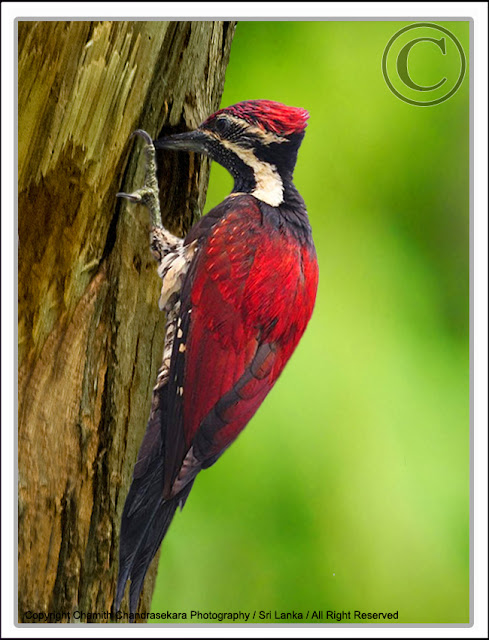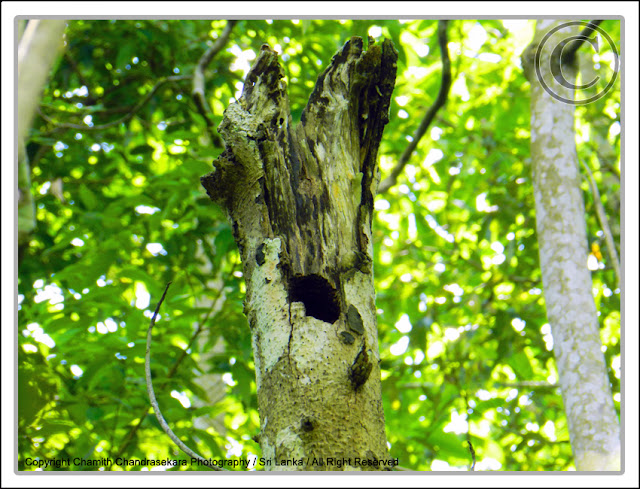Golden-backed Woodpecker (D. b.
puncticolle ) In Mannar,Sri Lanka
Identification
The Black-rumped Flameback is a large species at 26–29 cm in length. It has a typical woodpecker shape, and the golden yellow wing coverts are distinctive. The rump is black and not red as in the Greater Flameback. The underparts are white with dark chevron markings. The black throat finely marked with white immediately separates it from other golden backed woodpeckers in the Indian region. The head is whitish with a black nape and throat, and there is a greyish eye patch. Unlike the Greater Flameback it has no dark moustachial stripes.
The adult male has a red crown and crest. Females have a black forecrown spotted with white, with red only on the rear crest. Young birds are like the female, but duller
Distribution
Sri Lanka; India, western Myanmar.
Taxonomy
There are 4 subspecies.
- D. b. benghalense from northern India to Assam and south-western Burma
- D. b. dilutum in Pakistan
- D. b. puncticolle in central and southern India; northern province of Sri Lanka ( Golden-backed Woodpecker )
- D. b. psarodes in central and southern Sri Lanka ( Red-backed Woodpecker )
Open forest and cultivation.
Behaviour
This species is normally seen in pairs or small parties and sometimes joins mixed-species foraging flocks. They forage from the ground to the canopy. They feed on insects mainly beetle larvae from under the bark, visit termite mounds and sometimes feed on nectar. As they make hopping movements around branches, they often conceal themselves from potential predators. They adapt well in human-modified habitats making use of artificial constructions fallen fruits and even food scraps.
The breeding season varies with weather and is between February and July. They frequently drum during the breeding season. The nest hole is usually excavated by the birds and has a horizontal entrance and descends into a cavity. Sometimes birds may usurp the nest holes of other birds. Nests have also been noted in mud embankments. The eggs are laid inside the unlined cavity. The normal clutch is three and the eggs are elongate and glossy white. The eggs hatch after about 11 days of incubation. The chicks leave the nest after about 20 days.
See Also










